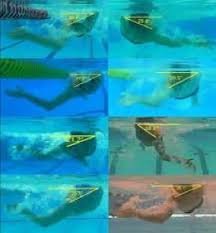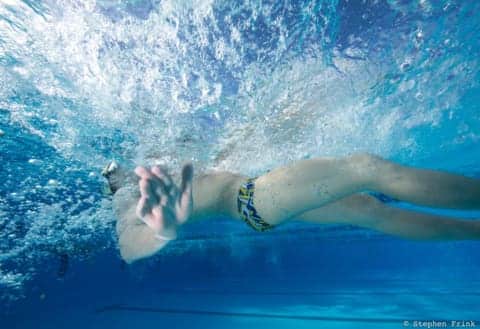Welcome back to Part II of our Backstroke Technique Series! Last week, we dove into how Backstroke and Freestyle are fundamentally similar.
This week, we are going to discuss the one MAJOR difference between these two strokes and how if you can master this difference–you will swim a FASTER Backstroke.
Get ready for the most lucrative Backstroke Pull Analysis!
If you haven’t had a chance to read Part I of this series, click here to discover the technical fundamentals of the Backstroke and Freestyle strokes!
Let’s get started…
As we talked about last week, Backstroke is similar to Freestyle in 3 fundamental ways:
- It’s a long-axis stroke.
- Maintaining a horizontal body position is key.
- The movement pattern of the kick is the same between each stroke.
Basically, you must swim (either stroke) with great rotation (around your long-axis), while constantly maintaining a great horizontal body position, and continue to hammer on your legs out back.
If we take a step away from these fundamentals, you realize there is really only one MAJOR difference between these two strokes. The long-axis definition covers the rotational aspect of these two strokes. The horizontal body position covers the body alignment issues arising from the rotation. And the movement pattern of the kick deals with what the legs are doing while swimming. This leaves out one very important aspect of the stroke: the arms.
When you swim Freestyle (whether you’re a high-elbow, hybrid, or straight arm swimmer), we can all agree that you never, ever initiate your pull with your elbow. This is ENTIRELY opposite of backstroke.
When your pinky enters the water (at the end of the recovery and the start of the pull), the hand continues to move downward, but a swimmer must bend their elbow to get their palm and forearm facing towards their feet. The degree of elbow bend varies between 100-130 degrees. Keep in mind at this moment, you will be at your maximum point of rotation (anywhere from 20-30 degrees from the water’s surface).

Here is a great photo from USA Swimming consultant, Russell Mark, depicting the angle of rotation from some of our USA National Team Athletes.
From this point, a swimmer initiates their pull by pushing the water straight back and rotating to their opposite side—while maintaining a bent elbow and their thumb right under the surface.
At the very end of the pull, a swimmer pushes their hand slightly downwards, past their hips—finishing with the palm facing inwards towards their body.

The recovery portion of this stroke is fairly simple—your thumb should be the first portion of your body to exit the water and the last to enter. During the recovery, your elbow stays fully extended, while the fingertips face away from your body.
Check out my Backstroke Pull Analysis below:
Overall, backstroke is very fundamentally similar to freestyle. It is possible to swim a decent backstroke if you’ve conquered the technical similarities between these two strokes. BUT, what really separates a decent backstroker from an elite one—is their pulling pattern.
[CLICK HERE] for Part III, as we finish out our series on backstroke discussing breathing patterns, common breathing errors, and more!
Until Next Time,
Abbie Fish

3 Responses